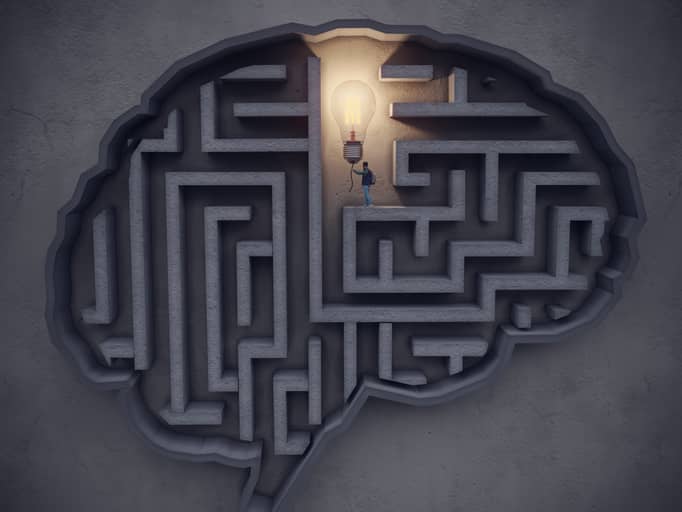We multitask far more than we're usually aware. I recently observed my habits for a week and was shocked at how many times I multitasked—and I'm even an anti-multitasker! To motivate myself to change, I did thorough research that I'd like to share with you.
The myth still exists that the ability to do multiple things at once, or multitasking, is highly productive. However, emerging research presents a starkly different narrative, suggesting that multitasking might not only be inefficient but has detrimental effects on our brain health, cognitive function, and emotional intelligence.
Estimated reading time: 5 minutes (let's see if you can read without jumping elsewhere) 😅
Heartmanity is proud to partner with outstanding companies that we wholeheartedly recommend so this post may contain affiliate links. You can read our full disclosure here.
Highlights:
- Debunking common misconceptions about multitasking.
- Research and studies on multitasking.
- Difference between multitasking and combining similar tasks.
- Why focusing on one task at a time can improve mental health.
- How emotional intelligence and relationships are affected by media multitasking.
The Myth of Multitasking: A Closer Look
The allure of multitasking is undeniable. The ability to check emails, participate in a meeting, and sip on your morning coffee simultaneously are the norm.
However, studies, including pivotal research from Stanford University, have shown that multitasking significantly impairs our ability to perform effectively. This research indicates that when we divide our attention across multiple tasks, our efficiency and the quality of our work suffer.
Contrary to multitasking, combining tasks strategically can enhance efficiency without compromising the quality of output. This approach involves integrating complementary tasks that do not compete for the same cognitive resources, allowing for a smoother workflow that respects our brain's natural processing capabilities.
Our brains actually lack the architecture for such a stop-start-shift process such as multitasking.
Related reading: "How Multitasking Affects Productivity and Brain Health."
Stanford Studies on Multitasking: Its Impact on Performance and Memory
The Stanford study shed light on a crucial insight: individuals who frequently engage in multitasking are not only less productive but also exhibit diminished memory recall and attention to detail. This acknowledgement challenges the once-held belief that multitasking is efficient and productive.
Instead, it suggests that the art of focusing on one task at a time enhances our ability to process information and perform tasks with greater accuracy.
Debunking Common Misconceptions
Many take pride in being excellent multitaskers. However, the same Stanford research shows that those who consider themselves proficient multitaskers are, in fact, worse at multitasking than they perceive.
The frequent switch between tasks hampers their ability to organize thoughts and filter out irrelevant information, leading to decreased productivity and increased susceptibility to distractions.
The Cognitive Cost: How Multitasking Affects Our Brains
The cognitive repercussions of multitasking extend beyond mere inefficiency. Attempting to do two tasks or different tasks at the same time has switch costs and research suggests it will take longer.
Another notable highlight is a decrease in grey matter in the brain as a result of media multitasking has been shown in multiple studies.
What is grey matter responsible for?
Grey matter is where information processing happens. The grey matter is the seat of a human’s unique ability to think and reason. The grey matter is the place where the processing of sensation, perception, voluntary movement, learning, speech and cognition takes place.
Pretty vital, wouldn't you say?
Here's the clincher!
In academic studies, individuals who reported higher amounts of media multitasking had smaller gray matter density.
Perhaps the most alarming evidence against multitasking comes from research conducted by the University of Sussex, which found a correlation between high levels of multitasking and reduced brain density in the anterior cingulate cortex, an area of the brain responsible for empathy and emotional control.
This data suggests that the effects of multitasking could transcend temporary cognitive impairment, potentially leading to long-term changes in brain structure.
As mentioned before, combining tasks has a completely different result and effect on the brain. Since research suggests multitasking is detrimental to our brain, it is essential to know the difference. For your ease, I've isolated them below to show the difference and how they each affect us.
What's the Difference Between Multitasking and Combining Tasks?
Multitasking and combining similar tasks are often confused, but they represent distinct approaches to managing work and time. Here's an explanation of the difference, with examples for each.
Multitasking Examples
Multitasking:
Multitasking involves attempting to perform two or more unrelated tasks simultaneously or in rapid succession. This approach typically leads to decreased efficiency and quality of work due to the cognitive cost of switching between different types of tasks.
Examples of multitasking:
1. Answering emails while on a phone call.
2. Texting while driving.
3. Watching TV while studying for an exam or filling out an application.
4. Cooking dinner and listening to a podcast while helping a child with homework.
5. Playing games on your phone while watching TV.
Combining Tasks Examples
Combining Similar Tasks:
This approach, also known as task batching or chunking, involves grouping related tasks together and performing them in a focused block of time. This method can increase efficiency by reducing context switching and allowing you to maintain focus on a single type of activity.
Examples of combining similar tasks:
1. Responding to all emails in one dedicated time block.
2. Preparing meals for the week in a single cooking session.
3. Running all errands in one trip.
4. Scheduling all phone calls or meetings back-to-back.
5. Doing a food stuffs inventory while writing a grocery list.
The key difference is that multitasking attempts to juggle different types of tasks simultaneously, while combining similar tasks allows you to focus on one category of work at a time, potentially improving productivity and reducing mental fatigue.
Key Qualities of Multitasking Versus Combining Similar Tasks
The key qualities that set multitasking and combining similar tasks apart from one another are included in a comparison chart below.
| Quality | Multitasking | Combining Tasks |
| Cognitive demands | Requires frequent context switching, which is cognitively demanding | Minimizes context switching, reducing cognitive load. |
| Focus | Divides attention across different types of activities stressing the brain. | Maintains focus on a single category, which streamlines work. |
| Efficiency | Often leads to decreased efficiency due to task-switching costs. | Generally increases efficiency by leveraging time, momentum, and focus. |
| Mental fatigue | Typically results in higher mental fatigue due to constant refocusing. | Usually leads to less mental fatigue; supports natural attention spans. |
| Quality | May lead to lower quality output due to divided attention. | Often results in higher quality work due to sustained focus. |
These differences highlight why combining similar tasks is generally more beneficial for productivity and mental well-being compared to multitasking.
Understanding the EQ Connection: Multitasking and Emotional Intelligence
As you've seen, multitasking dramatically affects our cognitive abilities but what about our emotional intelligence (EQ)?
When we juggle multiple tasks, switching rapidly between different demands on our attention, we unwittingly compromise a crucial aspect of our personal and professional lives: our emotional intelligence.
This vital EQ skill set, encompassing self-awareness, empathy, social skills, and emotional regulation, suffers notably under a fragmented focus that multitasking demands.
Multitasking can hinder emotional intelligence in several ways:
Reduced Awareness of Our Emotions
Dividing attention across tasks makes it harder to pay attention to our interior world. When the priority is checking things off our to-do list faster, we hardly notice the rumblings of our emotional turbulence.
And we're so busy switching tasks, which is demanding for our brains, we miss the subtle emotional cues of ourselves and others altogether. Our focus is on getting things done rather than staying present, listening to ourselves, or monitoring our inner emotional state.
Increased Stress Levels
Juggling multiple tasks can elevate stress levels, diminishing the ability to regulate emotions effectively and increase emotional reactivity. Multitasking creates a sense of perpetual urgency, diminishing patience and presence. Knowing the difference between healthy and chronic stress can be helpful.
Impaired Communication
Multitasking often leads to superficial communication as attention shifts rapidly, reduces ability to focus deeply on others and making it harder to pick up on subtle emotional cues and nuances in conversations. It fragments our attention, making it difficult to maintain meaningful connections and engage in active listening, both crucial components of emotional intelligence.
Lower Empathy Levels
With attention divided, there's less capacity to deeply engage with others' emotions, reducing the ability to connect empathetically. Depletes cognitive resources, leaving less mental capacity for empathy
Fragmented Attention and Difficulty in Mindfulness
Multitasking promotes a reactive rather than reflective mindset, hindering practices like mindful responses, empathy, self-awareness, emotional awareness and self-regulation.
In essence, by promoting distraction and reducing focus, multitasking undermines the foundational skills of emotional intelligence, negatively impacting both personal and professional interactions.
High EQ individuals, known for their top performance in various aspects of life, understand the importance of being fully present and attentive, reinforcing the idea that multitasking can be more of a hindrance than a help.
A study on emotional regulation and media multitasking found multitasking between medias to be a maladaptive coping mechanism, interfering with healthy emotional regulation.
Results support the idea that media multitasking is linked to difficulty dealing with emotionally negative stimuli and serves as an avoidance coping strategy where one deliberately directs attention away from negative stimuli to prevent their further processing. The findings have real-life implications for managing anxiety and depression, as media multitasking may be used as a maladaptive coping strategy that further increases these negative moods.
In my coaching practice, I find two main areas of low emotional intelligence skills in people: emotional regulation and the ability to be truly present to themselves and others.
The ability to be present, suspend judgment, and silence our busy minds so that we can interact in meaningful ways is becoming rare.
Related reading: "5 Ways Brain Fitness and Behavioral Health Are Optimized by Healthy Habits."

Media Multitasking and Its Toll on Relationships
Relationships hunger for presence.
Multitasking significantly erodes the quality of our relationships by undermining the fundamental elements of meaningful connection.
When we divide our attention between multiple tasks or devices, we fail to give others our full presence, sending a subtle but powerful message that they are not our priority.
Daily task-switching reduces our capacity for active listening, a crucial skill for building empathy and understanding. We may hear words but fail to comprehend the emotions and intentions behind them.
This lack of focused attention hinders deep conversations and emotional intimacy. Empathizing with loved ones or genuinely understanding a co-worker from a diverse background requires presence.
Over time, this can lead to increased misunderstandings, unresolved conflicts, and a sense of emotional distance.
In my couples' mentoring, true and open communication is often missing. Instead of differences of opinions sparking a lively and engaging discussion, the conflicting views lead to fighting or abrupt shutdowns and disconnection. When one partner expresses themselves, the other jumps on one word or a misinterpretation of what is said or meant.
Although our varying perspectives and cognitive biases tend to filter, there seems to be a whole new level of inattentive listening.
Does multitasking combined with the use of technology partially responsible for decreased presence and increased disconnection?
It's certainly possible.
It is a common occurrence to see:
- A parent on their phone while completely ignoring their child's requests.
- A loved one in the middle of a conversation stop and answer a text.
- Teens addicted to technology and isolating from family.
- Smartphones light up or buzz grabbing the attention of everyone.
- Family members on devices in different rooms.
- A spouse surfing the internet instead of connecting with their partner.
This erosion diminishes our own well-being but also affects how we connect with others.
Ultimately, by sacrificing quality time and focused attention, multitasking can rob us of the opportunity to nurture and deepen our relationships, potentially leading to a sense of isolation despite constant connectivity.
Strategies to Maintain a Healthy Balance
In recognizing the pitfalls of multitasking, it's essential to adopt strategies that promote intentional focus and mindfulness.
However, nothing is bad in and of itself—it's our use of it.
As Oscar Wilde has been credited in saying, "Everything in moderation, including moderation."
So, find a balance for yourself.
Raise your awareness and identify when you're multitasking too much and unnecessarily. Research on multitasking and our brains is still in infancy.
When you want a sustained focus, try the following:
- Minimize or eliminate distractions.
- Introduce a specific time of the day for focused tasks to cue the brain.
- Try using the Pomodoro Technique.
- Implement a mindfulness practice.
- Set specific times to check emails and messages.
- Group similar activities.
AI may be able to execute multiple assignments all at once; humans not so much.
By cultivating mindfulness and presence, you can intentionally vouchsafe brain health while building emotional intelligence and deeper connections in your relationships.
The choice is yours.
For personalized coaching support and additional EQ tools customized to you, contact Heartmanity!









